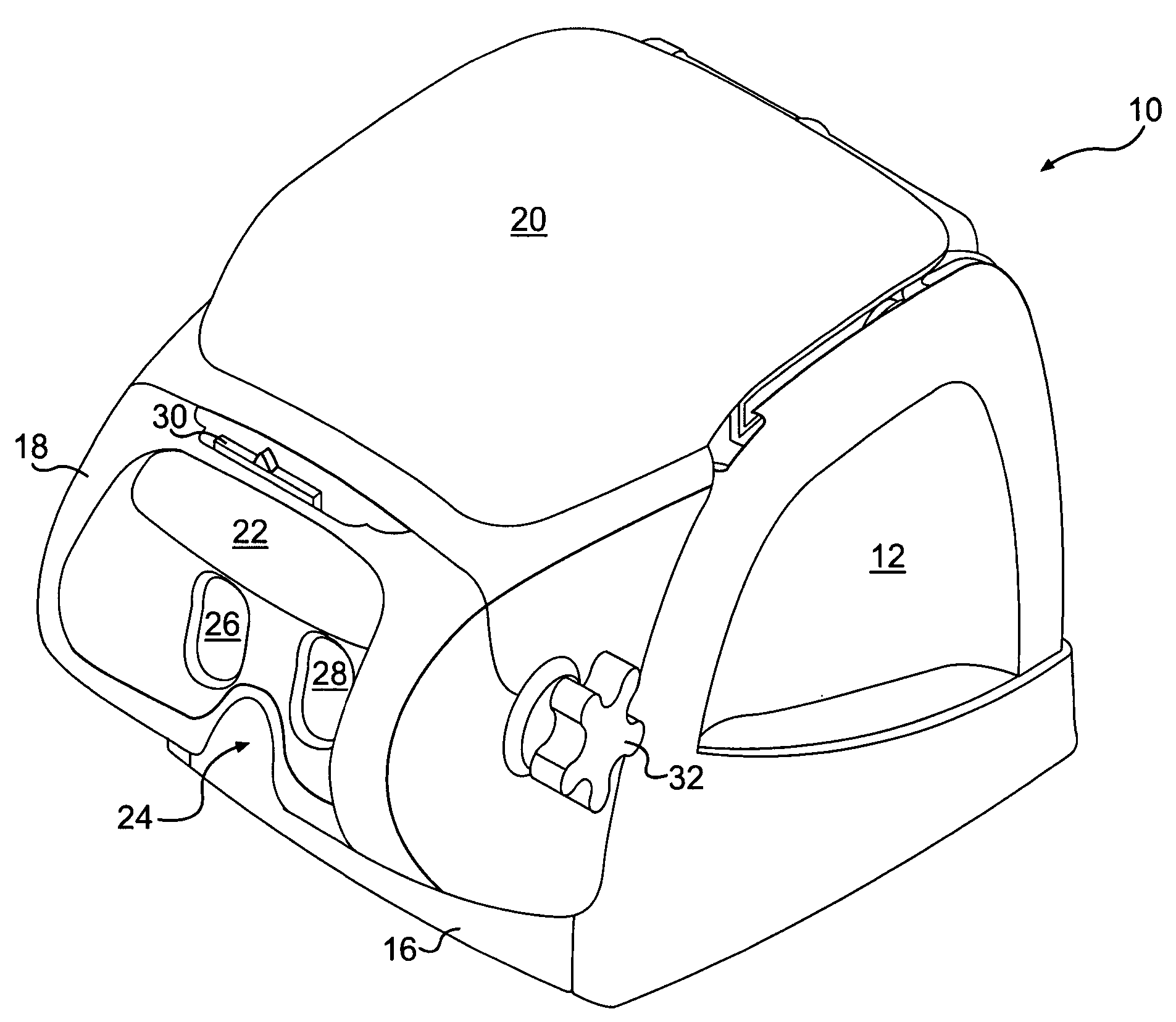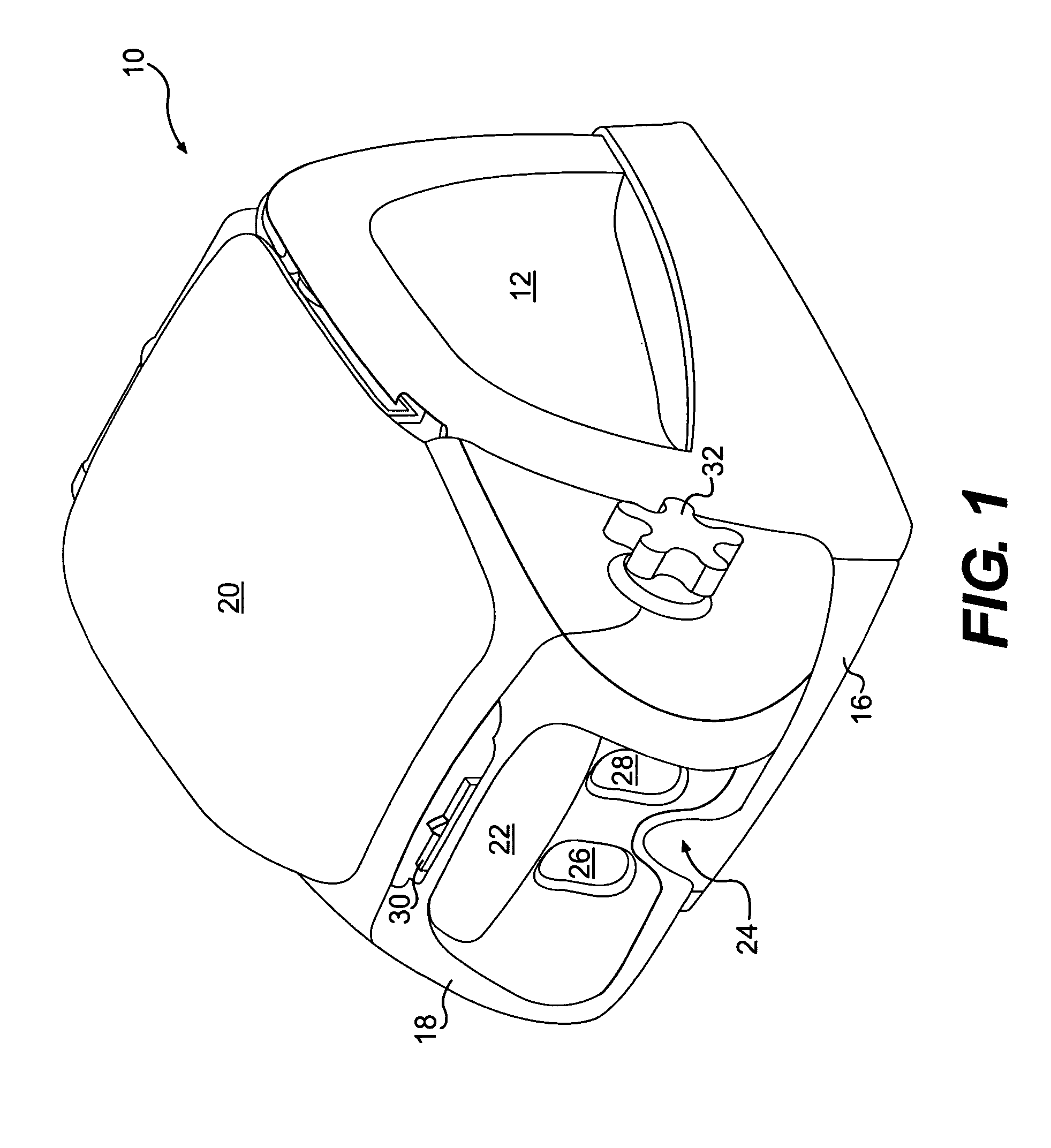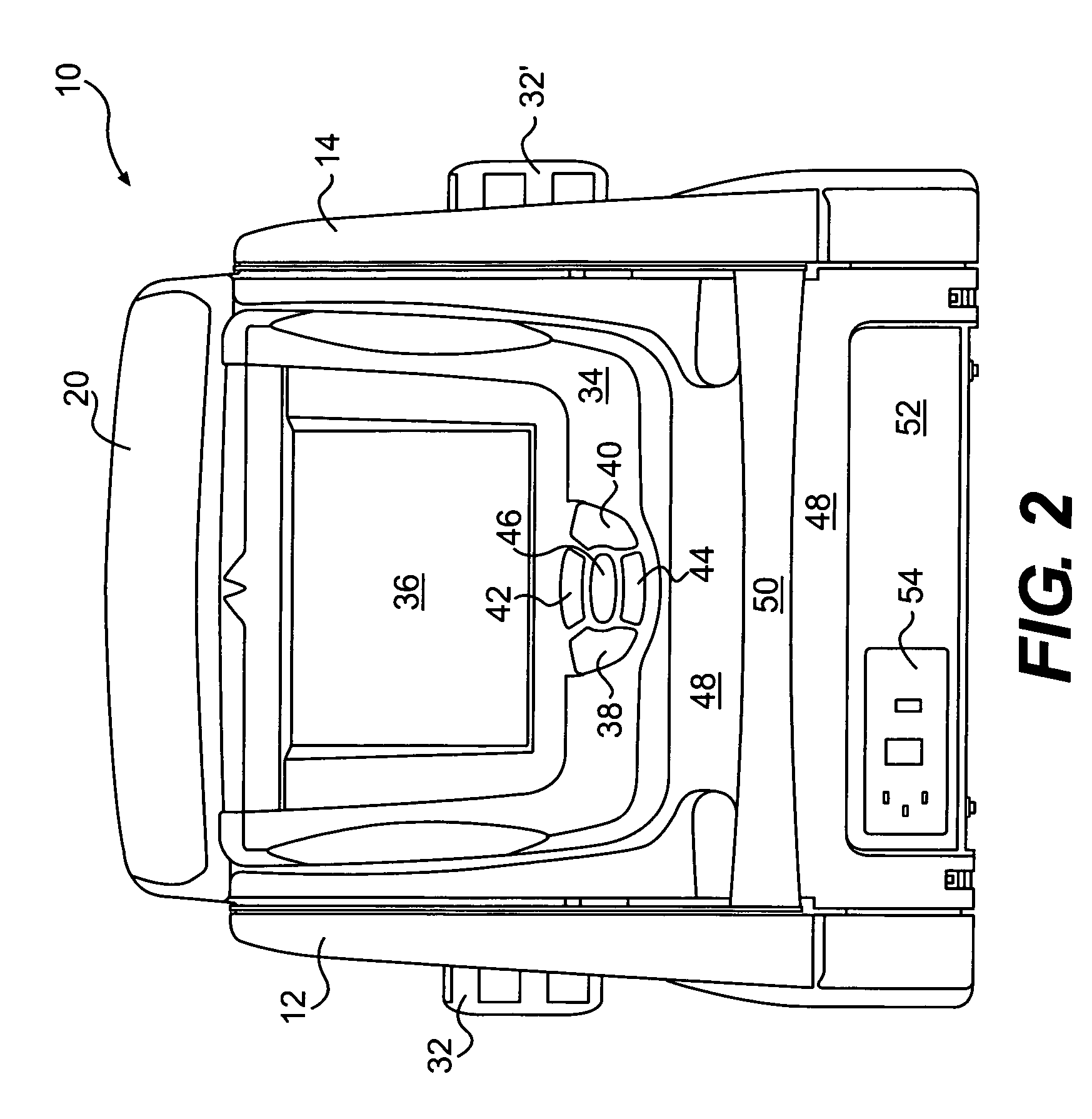Vision testing apparatus
a technology for testing apparatus and vision, applied in the field of ophthalmic instruments, can solve the problems of not being sure the child is properly, performing the vision test may not be able to adequately explain the procedure, and children are difficult to understand the concept of rows and columns
- Summary
- Abstract
- Description
- Claims
- Application Information
AI Technical Summary
Benefits of technology
Problems solved by technology
Method used
Image
Examples
Embodiment Construction
[0033]The invention will be described in the context of one or more preferred embodiments. FIGS. 1-13 illustrate a vision testing apparatus in accordance with preferred embodiments of the present invention, but it is to be understood that an engineer or designer having ordinary skill in the art of vision testing apparatus assembly will be able to create a vision testing apparatus that incorporates the teachings of the present invention but which may look different and incorporate different, alternative parts without leaving the scope of the invention.
[0034]Turning now to FIGS. 1 and 2, there is illustrated a vision testing apparatus 10 that is encased by various body panels including a right side cover 12 and a corresponding left side cover 14. A front trim piece 16, a lens cover 18, and a top cover 20 provide an aesthetic quality. Lens cover 18 and top cover 20 are part of a viewer housing 21 described below.
[0035]In use, a patient rests their forehead against a headrest 22 with th...
PUM
 Login to View More
Login to View More Abstract
Description
Claims
Application Information
 Login to View More
Login to View More - R&D
- Intellectual Property
- Life Sciences
- Materials
- Tech Scout
- Unparalleled Data Quality
- Higher Quality Content
- 60% Fewer Hallucinations
Browse by: Latest US Patents, China's latest patents, Technical Efficacy Thesaurus, Application Domain, Technology Topic, Popular Technical Reports.
© 2025 PatSnap. All rights reserved.Legal|Privacy policy|Modern Slavery Act Transparency Statement|Sitemap|About US| Contact US: help@patsnap.com



